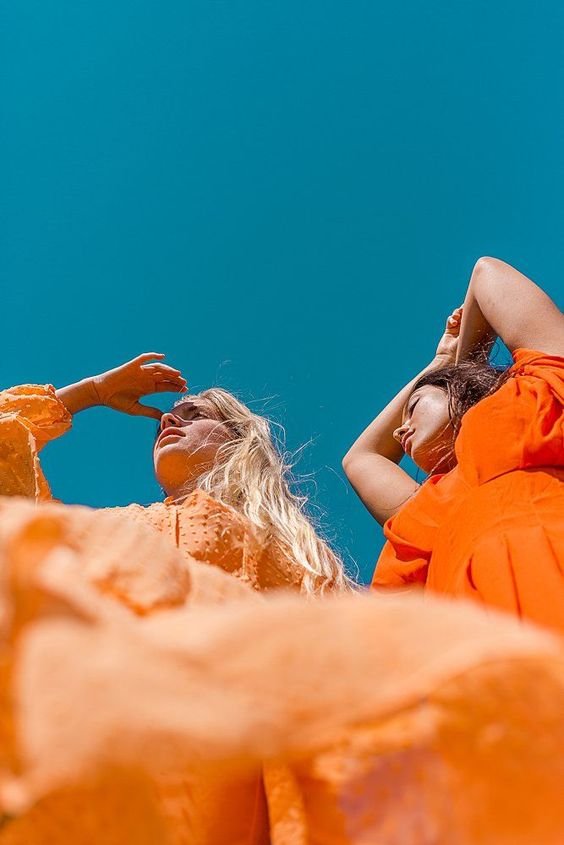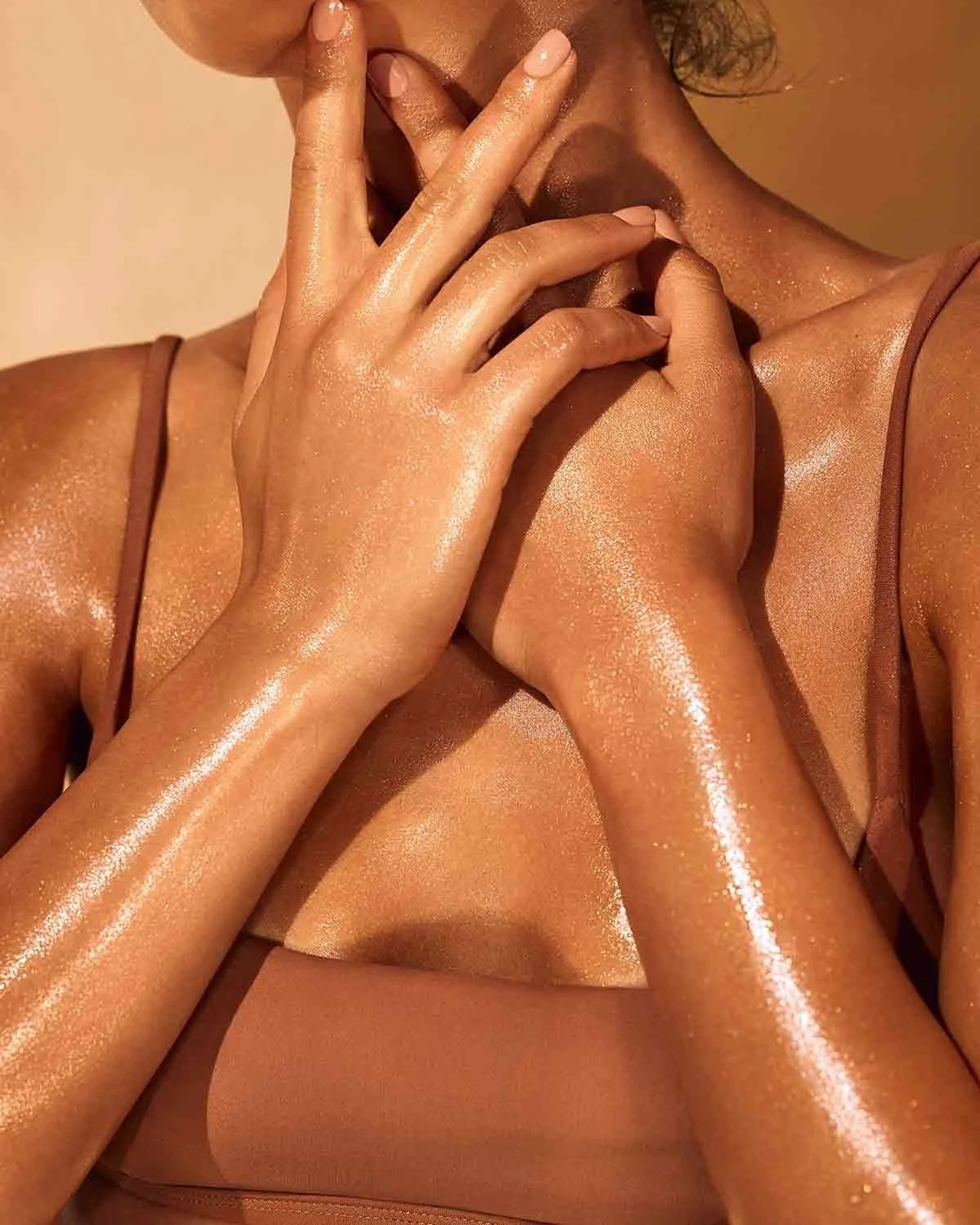Sun safety is important for everyone regardless of your skin colour or type says editor Trudi Brewer. Who shares the latest SPF update - just in time for our long hot summer.
Image Instagram
While there is nothing better than sunny blue skies, sunshine has a dark side - and when it comes to sun protection, we believe the science. Ultraviolet (UV) rays are the number one cause of skin cancer - and sunscreen is your best defence. To understand more and clear up that misinformation about sunscreen dermatologist Patricia Lucey, MD, from the Inova Melanoma and Skin Cancer Centre, shares the facts, and myths. While editor Trudi Brewer shares her favourite sunscreens.
Myth: The sun is natural, and a little bit is good for you
Fact: The sun may be natural, but that doesn’t mean it’s harmless. Sun exposure causes wrinkles, discolouration and premature ageing. It also causes skin cancer. There are three types of skin cancer: basal cell carcinoma (BCC), squamous cell carcinoma (SCC) and melanoma (the deadliest form of skin cancer). The majority of BCC and SCC is caused by UV exposure - and shockingly eight out of ten cases of melanoma are caused by sunlight.
Myth: I only need sunscreen if I’m going outside on a sunny day
Fact: Sunscreen isn’t just something you need for a day at the beach. UV light is harmful in all seasons, on cloudy days, and even when you’re exposed through a window. In fact, dermatologists diagnose more skin cancers on the left side of the face than the right. Why? People are often exposed through their car windows while driving. To protect yourself from sun damage, you should use sunscreen every day, on all exposed skin.
Naked Sundays SPF50+ Collagen Glow Crème, $37.
A four-in-one SPF. It’s your primer, moisturiser, sunscreen and an antioxidant plant-based collagen-boost. Your skin will benefit from the amino acids, glycine, proline and lysine that promote collagen synthesis in the skin, while watermelon loaded with vitamin C, vitamin E helps to combat the free radicals from those damaging UV rays. Finally, it’s vegan, and parabens, mineral oil, sulfate-free.
How to use: Exclusively for the face and neck, it’s the first product you apply on cleansed, dry skin, avoiding the under-eye area. There is also an SPF50.
Myth: I heard sunscreen doesn’t prevent melanoma
Fact: Older research showed sunscreen could protect people from BCCs and SCCs cancers. But the story wasn’t entirely clear for melanoma, the deadliest form of skin cancer. In the past, sunscreens were mainly protecting against a type of sunlight known as UVB rays or burning rays. We now know that both UVB and UVA rays contribute to melanoma. So, a broad-spectrum sunscreen (which protects against both UVA and UVB) is an effective way to lower the odds of developing melanoma.
Myth: I need sunscreen to get my vitamin D
Fact: Vitamin D is an important nutrient for human health. It’s true that the body can make it when the skin is exposed to UV rays. But after just 15 minutes in the sun, your vitamin D receptors are fully saturated. After that point, you won’t be able to make any more vitamin D from the sun. If you must rely on the sun to get your D fix make sure to put on sunscreen after 15 minutes while out in the sun. Better yet, try to get your vitamin D from foods or supplements. You’ll get all the benefits of the vitamin without the increased skin cancer risk.
Shiseido Clear Suncare Stick SPF 50+, $55.
For those sporty types, this is your on-the-go SPF without the stickiness on your hands post-application. With innovative WetForce and HeatForce technology in an invisible, gel this screen absorbs in seconds and sticks to the skin regardless of how wet or sweaty you get. It’s also brilliant for those hard-to-reach spots like the backs of the ears and behind the knees. The speedy touch-free stick was designed to be applied anywhere on your face and body, around the eyes and nose, and it can be applied under or over makeup.
Myth: Getting a ‘base tan’ protects me from sun damage
Fact: Some people believe that going to tanning beds is a good way to protect themselves from sunburns and sun damage. But any tan is a sign of DNA damage. Having a so-called “base tan” won’t protect you from further damage if you spend time in the sun. What’s more, tanning beds only contain UVA rays - ageing rays, sunburns are caused by UVB rays. So getting a base from a tanning bed does nothing to ward off sunburns.
Myth: I have dark skin, so I don’t need sunscreen
Fact: It’s true that people with fair skin are more vulnerable to UV damage, but skin cancer can strike no matter your skin colour. In fact, people with darker skin may not realise they’re experiencing sun damage, since the melanin (pigment) in their darker skin can mask the redness of a sunburn. Plus, melanin doesn’t protect against the type of sun damage that causes premature ageing and wrinkles.
Neutrogena Hydro Boost Water Gel Lotion SPF50, $24.
Our best sunscreen tip is to find a formula you like wearing to ensure you apply it daily. Stacked with Helioplex, a technology that blends both chemical and physical screens, it provides broad-spectrum protection against skin-ageing UVA, ageing rays and burning UVB rays. There's also a good helping of the moisture magnet hyaluronic acid in the formulation to give skin eight hours of moisture. Our style director loves this lightweight formula while running because it absorbs in seconds and doesn't run into her eyes - also, there is no white residue visible post-application. With four hours of water-resistant protection, it's excellent to keep when poolside.
Myth: Sunscreen doesn’t work for me
Fact: If you’re using sunscreen and still getting tanned or burned, you’re not applying it properly. Sunscreen is rated by its sun protection factor, or SPF. That’s the measure of how long you can be in the sun before you start to burn. If you wear SPF 30, for example, and the burn time is three minutes, then it should offer 90 minutes of protection. But most people don’t apply nearly enough to get the full protection listed on the label. Sunscreen that says SPF 30 may be acting more like SPF 15 if you use it sparingly. So, to get the full benefit of sunscreen: Apply thickly. Use about a shot glass full for your whole body, then reapply often, especially if you’re swimming or sweating. Finally, use creams instead of sprays for maximum coverage.
Myth: I always have a bad reaction to sunscreen
Fact: Sunscreen comes in two categories when it comes to ingredients: Chemical sunscreens absorb UV rays. Common ingredients are oxybenzone, octinoxate and avobenzone. While physical (mineral) sunscreens block UV rays and deflect them away from the skin. They are often referred to as mineral sunscreens since they contain titanium dioxide or zinc oxide. Many people can use both types with no trouble. But some people find that chemical sunscreens can irritate their eyes or skin. If you’re sensitive to chemical varieties, look for physical sunscreen instead. Bonus: Physical options don’t break down as fast, so they don’t need to be reapplied as often.
AVÈNE SUNSCREEN AQUA FLUID SPF50+, $28.
Formulated with few chemical ingredients, but a blend of five actives, including the physical block titanium dioxide, and the antioxidant, photostable vitamin E, as well as coconut oil with glycerin. Like all Avène skincare, this SPF has a base of soothing thermal spring water. Finally, it’s paraben, alcohol and fragrance-free, ideal for sensitive skin.
Myth: Sunscreen is full of harmful chemicals
Fact: Oxybenzone is a common ingredient in chemical sunscreens. Some research has linked the ingredient to harmful effects in rats. But the animals in those studies were fed large amounts of the chemical. There are no studies that show toxic effects in humans caused by oxybenzone being absorbed through the skin. Still, if you’re wary, there’s an easy fix: Reach for mineral sunscreens instead.
Myth: Sunscreen is bad for the environment
Fact: Studies suggest oxybenzone can harm coral reefs and other sea life. Some tropical locations have banned these sunscreens to protect their reefs. But you can protect yourself and the sea creatures by choosing mineral sunscreen instead. There are also some concerns that spray-on sunscreens, which use aerosols, cause harmful air pollution. Cream sunscreens are always a better option. It’s easy to find excuses to avoid sunscreen. But those flimsy excuses just don’t hold up to the facts. Once you start using sunscreen every day, it won’t take long for it to become a healthy habit.
ENVIRON RAD SHIELD MINERAL SUNSCREEN, $93.
According to Environ’s founder Dr Des Fernandes, “UV exposure strips the skin of the vitamins that keep it healthy and youthful. So you should eat a rainbow of fruits and vegetables, and try to incorporate turmeric in recipes, it's a well-known anti-inflammatory.“ Combined with wearing a daily SPF, Fernandes favours mineral screens, his latest is a pure mineral screen, with skin-loving antioxidants, offering that vital UVA and UVB protection. But most importantly it plays nice under makeup and over moisturiser.
















Why salmon sperm is more than just a viral moment for the skin.